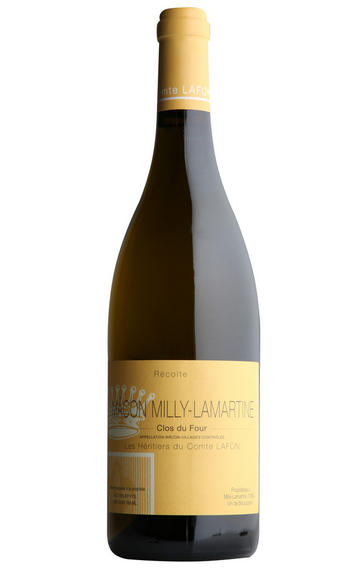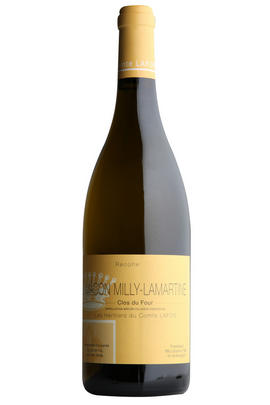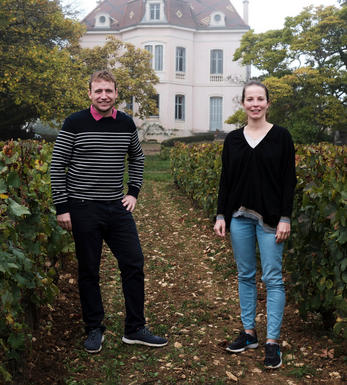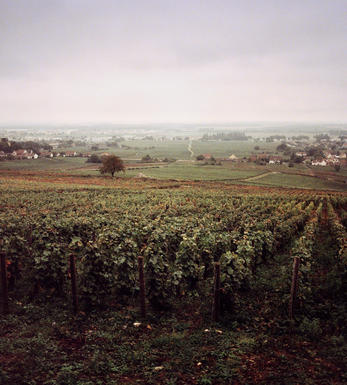
2015 Mâcon-Milly-Lamartine, Les Héritiers du Comte Lafon, Burgundy

Critics reviews
Neal Martin - 31/08/2017
About this WINE

Heritiers du Comte Lafon
Les Héritiers du Comte Lafon was established in 1999 when the famed Lafon family of Meursault purchased a small domaine in Milly-Lamartine.
Their enthusiasm for the project has grown ever since, as has the domaine: today it covers 26 hectares in the most prestigious appellations of the Mâconnais, all farmed biodynamically.
The estate is overseen by the energetic Caroline Gon, in close consultation with Dominique Lafon. The 2020 vintage sees the increased involvement of Dominique’s daughter Léa and nephew Pierre, both taking a keen interest in the Mâconnais project.
Caroline continues to run the estate on a day-to-day basis, putting Dominique’s vision into practice.
In the winery
Vinification and ageing continue to move towards larger oak formats, with increased use of foudres and demi-muids. The team recognise the profile of Mâcon wines as being more generous and fruitier than those of the Côte d’Or. So their aim is to retain as much freshness as possible, and not to impart too much oak character.

Mâcon
The city of Mâcon represents the capital of the Mâconnais district in the region of Burgundy, to which it lends its name. There are various appellations under the name Mâcon: the generic Mâcon AC, Mâcon Supérieur and the Mâcon-Villages, in ascending order of how much land each appellation entails.
The standard Mâcon AC controls around 53 hectares of vineyard, 70 percent of which is used to produce just white wine, primarily from the Chardonnay grape. Mâcon used to be recognised for its red wines, but in the last century Mâconnais whites have come to the forefront far more. This generic appellation represents a specific style of wine made across the Mâconnais district, rather than an appellation which would cover a select area or terroir.
The ‘Supérieur’ in Mâcon Supérieur refers not to an increase in quality but rather to the boost in alcohol content, a term which can be applied to either red or white wines.
Mâcon-Villages is a specific appellation which refers to white wines produced in certain areas of the Mâconnais region, and usually denotes an improvement in quality over the straightforward Mâcon AC wines.
Many of the small communes under the Mâcon classification opt to add their name to that of the appellation on their wines; notable examples include La Roche Vineuse, Uchizy and Lugny.
Wines from Mâcon tend to be uncomplicated affairs, simple but enjoyable, and the whites in particular are notable for their dry, light bodies and the presence of floral and nutty facets.

Chardonnay
Chardonnay is often seen as the king of white wine grapes and one of the most widely planted in the world It is suited to a wide variety of soils, though it excels in soils with a high limestone content as found in Champagne, Chablis, and the Côte D`Or.
Burgundy is Chardonnay's spiritual home and the best White Burgundies are dry, rich, honeyed wines with marvellous poise, elegance and balance. They are unquestionably the finest dry white wines in the world. Chardonnay plays a crucial role in the Champagne blend, providing structure and finesse, and is the sole grape in Blanc de Blancs.
It is quantitatively important in California and Australia, is widely planted in Chile and South Africa, and is the second most widely planted grape in New Zealand. In warm climates Chardonnay has a tendency to develop very high sugar levels during the final stages of ripening and this can occur at the expense of acidity. Late picking is a common problem and can result in blowsy and flabby wines that lack structure and definition.
Recently in the New World, we have seen a move towards more elegant, better- balanced and less oak-driven Chardonnays, and this is to be welcomed.


Buying options
Add to wishlist
Description
From a relatively cool, east-facing vineyard at 300 metres’ altitude, this is delightfully pure and mineral; its aromas leaning more towards ripe citrus (grapefruit) than stone fruit. The long, saline finish confirms its pedigree.
Will Heslop - Wine Buyer
wine at a glance
Delivery and quality guarantee